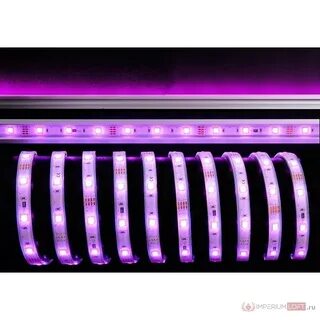
12V led strip lights are low-voltage electricity. 220V is high-voltage electricity suitable for civilian use. You can also say that the input voltage of 220V is exactly the same as the operating voltage of 12V.
The light strip 220V is practical and can be directly connected to the power supply of 220V however it isn’t secure.
Led strips that are low-voltage are safer. When you connect them, however you must connect a transformer before it can be connected to the power source.
The light strip plug 220V includes a rectifier and converter and constant current output within. Its rectified and filtering output voltage is 300V DC.
Through constant current conversion, it controls the output current to be 10 milliamperes of DC to drive the LED light strip. The 12V strip of light is not equipped with a converter, but 12V DC is utilized to power the LED strip.
Selection parameters for LEDs and 12v led strip lights direct drive
I’ll start by asking you a question: Could 12V drive a light emitting diode in direct series with resistors?
The maximum operating current of LED lamp beads with low power with a variety of shades is typically 20mA. However the actual amount varies between 5 and 15mA.
For red low-power LEDs, the forward voltage drop is 1.6~2V The green ones are generally 1.8~2.4V and blue and white are 3~3.3V.
Consider that a blue light bead is powered by a 12V power supply and the operating current is 9mA. Then, the current-limiting resistor R is equal to (12V-3V/9mA) = 1KO. The voltage drop forward for the blue lamp is 3V.
Although I used the LED option, it still created problems for me. Its brightness isn’t as high as the three-color light, however I only see red.
The 3535MWAP from Nationstar Optoelectronics was selected.
The forward current is the one used by the led strip lights 12v use. In general, the working current for ordinary LEDs is extremely low, only 10mA-45mA.
When the voltage increases, the current can increase by a significant amount therefore light-emitting diodes connect in series with protective resistors.
LD LD: wavelength.
The various materials used to create the die may produce various shades.
Even for the same material there are different luminescent colors that can be obtain-ed by changing the nature or concentration of impurities as well as the composition of the material.
The table below lists the different luminescent materials which are used in LEDs.
Use of luminous color Materials with Wavelength
Red GaP with a normal red color.
High Brilliance red GaAsP
GaAlAs 660 Super bright red
Super bright red AlGaInP 625 – 640
Ordinary green GaP 565-572
High Brilliance Green AlGaInP
Super bright green InGaNg 505-540
Yellow normal GaAsP 590-610
Super bright yellow AlGaInP 590-610
Light intensity IV
The light intensity I is the luminous flux that is emitted from an lightsource in an angle unit.
Millicandela is a unit for intense luminous intensity, which is commonly referred to as candela.
Candela refers to the luminous intensity of a light source in a given direction. Candela is a measurement of the intensity of light in a particular direction.
VF: forward voltage
Forward voltage refers to the voltage drop between the positive electrode and the negative when the forward current flowing through the LED is at a certain value. This drop in voltage is represented in the form of a symbol “VF”.
Our company employs SMD LEDs with a forward voltage ranging from 2.0V to 3.5V.
If the voltage is higher than the operating voltage of normal, the diode may break down. In addition, when the forward voltage is less than a certain value (called the threshold) the current becomes extremely small and there is no light produced.
When the voltage is over certain levels, the forward current rapidly increases along with the voltage.
The light may not be correct since the voltage drop forward is merely a couple of volts.
View angle: perspective
The half-value angle is the angle that appears on the graph of luminous intensity distribution when the intensity is half the intensity of its maximum.
Figure 5>.
In the image, the normal direction of the LED is that of the mechanical axis, the direction of maximum brightness is the direction of the optical axis, and the angle that lies between the mechanical axis and optical axis changes to the angle of deviation.
The half-value angle directly is affected by the thickness of the chip as well as the dimensions of the mould strip.
When manufacturing, different dimensions of half-value angles may be obtain-ed by selecting different materials and choosing different size packages based on the requirements of the customer.
In accordance with the diagram of intensity distribution, there are three categories:
High directivity is achieved by using metal cavity packaging made of reflective points of either epoxy or metal. This can be done without the need for a scattering agent.
The half-value angle ranges from 5deg to 20deg or less. The high-directivity lighting can be employed as a source local of illumination or with a light sensor, to create an automated detection system.
b Standard type, typically used as an indicator lightwith a half value angle of 20deg-45deg.
C scattering light has a greater viewing angle, and also a half-value angle of 45deg and 90deg.